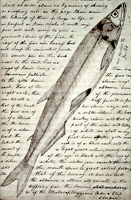The Piqua Historical Area State Memorial celebrates 2,000 years of Ohio's rich history from prehistoric Indians to Ohio's canal era. The focal point of the peaceful 200-acre park is John Johnston—farmer, public official, and United States Indian Agent for western Ohio from 1812 to 1829. Today, visitors enjoy the home and farm of this most extraordinary man much as it appeared in 1829. Preserved and furnished structures include Johnston's two-story mixed Dutch Colonial/Georgian style farmhouse, a unique two-story spring house, and a cider house. Costumed interpreters and craft demonstrators provide farm tours and display activities in the summer kitchen and fruit kiln areas. A mammoth double-penned log barn, constructed in 1808, is reputed to be the oldest and largest of its type in Ohio, and is still in use on the grounds. Nearby a ring-shaped mound earthwork discovered and preserved by Johnston was constructed by people of the Adena culture over 2,000 years ago. Not far from Johnston's farm is a modern museum, which was constructed to resemble the blockhouse style of Fort Piqua, General Anthony Wayne's 18th-century supply post. In 2001 the museum was renovated with updated exhibits that trace the story of the Eastern Woodland Indians of Ohio and the newly acquired Fort Pickawillany site. Artifacts from Ohio's canal era are also on exhibit. The patio portion of the museum building allows visitors the opportunity to view a restored mile-long section of the Miami and Erie Canal, which extended the length of Ohio from Toledo to Cincinnati. An array of outdoor interpretive panels explore Johnston's later role as a state canal commissioner and provide an introduction to how canals helped in the development and expansion of frontier Ohio. Afterwards, guests may enjoy a ride aboard the General Harrison of Piqua, a replica 70-foot-long mixed cargo canal boat often used for transportation of passengers and cargo in the 19th century. Costumed guides direct the mule-drawn boat to provide an authentic and memorable experience for all.
The site offers exhibits; tours; demonstrations; boat rides; and recreational and educational events, including living history events.
